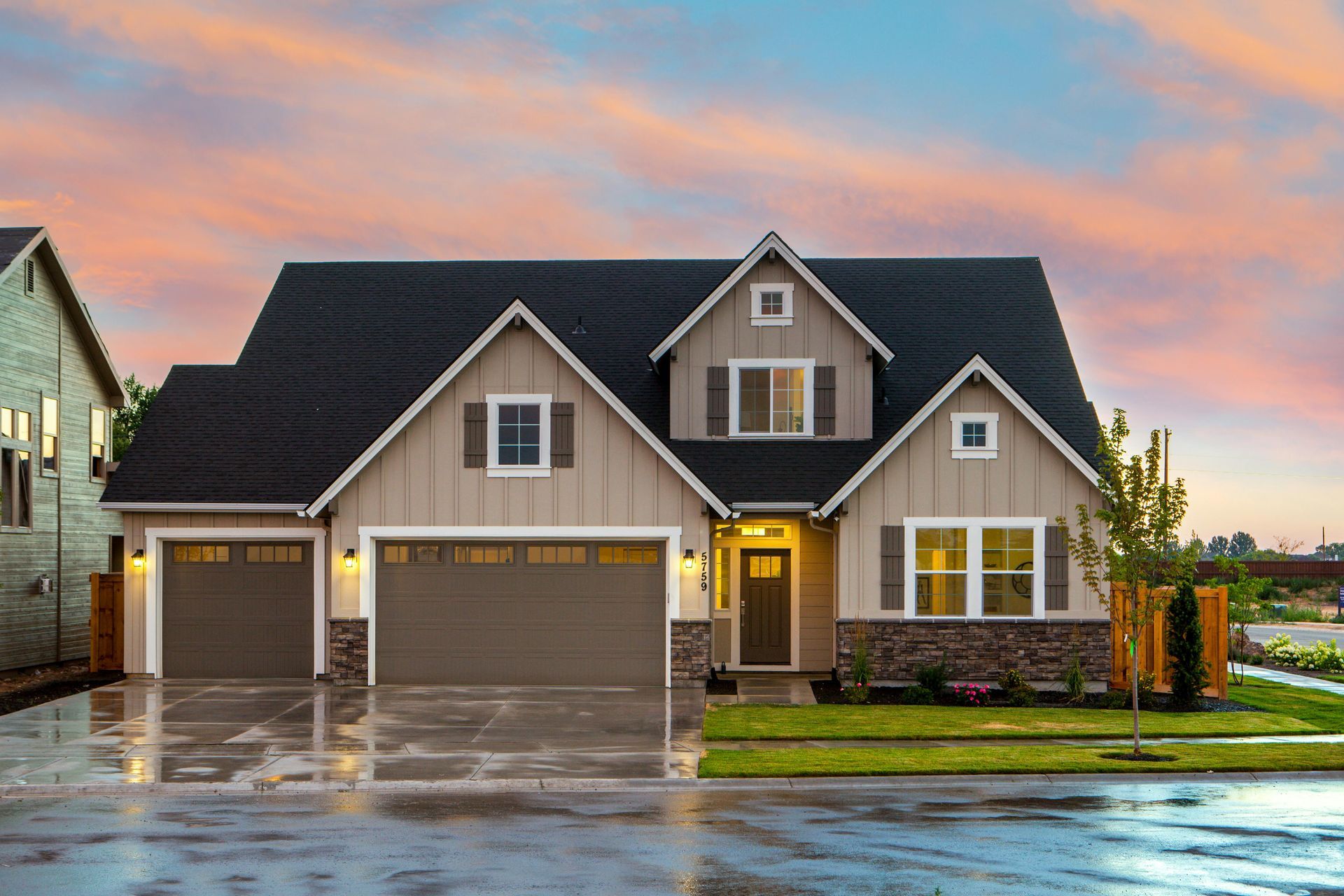RESIDENTIAL SERVICES
Residential Services
We can design a system that will satisfy the regulatory agency and your wishes as well. We would need a site pan that will give us a good start on the layout. Did you Know that: About 45,000 on-site wastewater treatment systems are installed annually in Texas to treat wastewater from rural and suburban homes as well as from small businesses. An on-site wastewater treatment system collects, treats and applies wastewater to the soil.
By definition, wastewater managed by an on-site system cannot leave the property where it is generated. The water can evaporate into the air, transpire though plants or move though the soil to groundwater. An effective on-site system removes wastewater from the home, treats and distributes the wastewater, and protects our water resources.
Selecting the appropriate system for the site conditions is critical to the system’s success. If you select the wrong system or design, or install, operate or maintain the system improperly, it can fail, which could result in pollution of your property and that of others. You could also be fined.
Because homeowners are responsible for conducting or contracting for maintenance of a system, they should be involved in selecting the technology, or type of system used.
Homeowners also should be aware of the operation and maintenance requirements of their system. Proper operation and maintenance can protect public and environmental health, increase their systems longevity, as well as protect property use and value.
Emergency repairs may be made to an OSSF providing that the repair:
Is made for the abatement of an immediate, serious and dangerous health hazard; and
Does not constitute an alteration of that OSSF system’s planning materials and function (which would require the issuance of a new OSSF permit).
Our office can be consulted on possible repair alternatives, but ultimately the homeowner is responsible for the repair of a failing system.
State regulations The Texas legislature passed a law (HB 1875) in 1987 to regulate onsite sewage facility (OSSF) systems statewide. The law called for regional and local governments—such as counties, cities, river authorities and special districts— to implement and enforce onsite sewage regulations with approval and oversight by the Texas Commission on Environmental Quality (TCEQ).
Although the state law has since been modified and expanded, its basic intent remains: The state sets minimum standards, and local authorities can adopt more stringent rules if the TCEQ approves them.
Contact Us to Learn How EDG can help with your Residential Wastewater Needs


FREQUENTLY ASKED QUESTIONS
How do I know if my property needs a septic system?
If your home is located in an area that does not have access to municipal sewer lines, a septic system is typically required for wastewater disposal. To determine if your property needs a septic system, we perform a site evaluation, which includes examining the size of the lot, soil conditions, and water table levels. The land’s suitability for a septic system also depends on local regulations and zoning codes. If you’re in a rural or suburban area of Austin, it’s likely that you’ll need a septic system for effective wastewater management.
What are the main benefits of a properly designed septic system?
A well-designed septic system provides several key benefits, including effective wastewater treatment, environmental protection, and long-term cost savings. By treating wastewater on-site, septic systems reduce the strain on municipal infrastructure. They also protect local water quality by ensuring that contaminants don’t seep into groundwater or nearby water bodies. Properly maintained systems have lower operating costs and are less likely to require expensive repairs, which can happen when systems are poorly designed or improperly installed. A custom design that fits your property’s specific needs ensures optimal performance for years to come.
How long does the design process take?
The design process for a residential septic system typically takes several weeks, depending on various factors such as property size, soil conditions, and the complexity of the site. We begin by scheduling a site evaluation to assess the land’s suitability for a septic system. After this evaluation, our engineers create a custom design that meets local codes and environmental standards. Permitting and approval from local authorities can add additional time. Overall, you can expect the entire process—from initial consultation to receiving your approved design plans—to take anywhere from two to six weeks.
What factors influence the size and type of septic system I need?
The size and type of septic system needed for your property depend on several factors, including the size of your household, water usage, soil quality, and the layout of your land. Larger households typically require a larger system, as more wastewater is generated. The soil’s percolation rate is another crucial factor, as it dictates how efficiently water can be absorbed into the ground. Other considerations include the slope of your property, the proximity to water sources, and any local regulations. Our team carefully analyzes these factors to design a septic system that meets your needs while ensuring efficient operation.
Are there different types of septic systems?
Yes, there are several types of septic systems, including conventional gravity systems, pressure distribution systems, mound systems, and aerobic treatment units. The choice of system depends on your site’s conditions, including soil type, water table, and the size of the property. Conventional systems are the most common and use gravity to move wastewater through pipes. Pressure distribution systems use pumps to distribute wastewater more evenly. Mound systems are often used when the soil is not suitable for a conventional system, while aerobic systems are used when additional treatment is necessary. Our team will recommend the best option for your property based on its unique characteristics.
What’s the difference between septic system design and septic system installation?
Septic system design focuses on planning the appropriate system for your property, while installation involves physically setting up the system according to the approved design. The design phase includes a site evaluation, soil testing, and obtaining permits. We’ll design the system based on your property’s specific needs, including selecting the right type and size of system, placement, and drainage solutions. Installation is the next step, where the system is dug, the components are installed, and all necessary connections are made. EDG specializes in designing systems but works with trusted contractors for installation, ensuring your design is executed perfectly.
What are common misconceptions about septic systems?
A common misconception about septic systems is that they last forever without maintenance. In reality, regular care is crucial to ensure the system continues to function properly. Without regular pumping, inspection, and proper design, systems can fail, leading to costly repairs or replacements. Another myth is that septic systems can handle any waste, but only biodegradable waste should be flushed. Non-biodegradable materials can clog pipes and harm the system. Additionally, many people assume that a septic system doesn’t need professional design, but a custom design is essential for the system’s efficiency and longevity.
What are the environmental benefits of using a septic system?
Septic systems offer significant environmental benefits by treating wastewater on-site, reducing the burden on municipal sewage systems, and preventing water pollution. When properly designed and maintained, septic systems can effectively filter and treat wastewater before it enters the ground or nearby water bodies. This reduces the risk of contaminating local drinking water or harming aquatic ecosystems. A well-designed septic system minimizes the environmental impact of wastewater disposal and can be an eco-friendly solution for homes in areas without access to sewer systems.
Can I use a septic system for a larger property or multiple buildings?
Yes, septic systems can be designed to accommodate larger properties or multiple buildings, but this requires careful planning. Larger properties with multiple buildings, such as guest houses or workshops, may require a more extensive system design, with additional tanks, leach fields, and distribution lines to handle the increased wastewater volume. We take into account all structures on the property when designing the system to ensure that each building’s wastewater is properly managed. Our team will work with you to develop a customized solution that meets the needs of your entire property.
What if my septic system fails? How can I prevent this?
A septic system can fail due to poor design, lack of maintenance, or improper use. Common causes of failure include clogged pipes, full septic tanks, and groundwater contamination. To prevent failure, it’s essential to follow a regular maintenance schedule, including periodic inspections and pumping. Avoid putting harmful chemicals or non-biodegradable items down the drain, as these can damage the system. If you notice signs of trouble, such as foul odors, slow drains, or backed-up sewage, contact us immediately. EDG can provide advice, repairs, and redesigns to help extend the life of your system.
Commercial and High Strength Zero Discharge Wastewater Systems and Wastewater Treatment Plants
A commercial wastewater treatment plant system, onsite sewage facility (OSSF), or commercial wastewater system, covers pretty much everything that is not residential. This includes schools, hotels, conference centers, convenience stores, vet clinics, motels, apartments, factories, manufacturing facility areas, wineries, breweries, restaurants, distilleries, conference centers, RV parks, marinas, and more. We design, permit, construct, and operate systems up to 500,000 gpd in the State of Texas. The permit requirements are vastly different, under the Texas Administrative Code, for such systems.
These are generally known as ” high BOD ” systems, or high strength wastewater, meaning the sewage strength is much higher than the amounts from a residence (10 times higher, and more). Such systems require not only hydraulic load balancing and disposal, but also proper biological load balancing and treatment. This is often accomplished by flow equalization of the system. Put our licensed professional engineer’s knowledge to work for you to ensure your system will meet all present and future needs of your business, and operate without any problems in the future.
Currently, any system over 5,000 gpd requires a State issued permit. We can design and permit these systems, either for zero-discharge, or discharge systems.

HAPPY CUSTOMERS!
What our customers say
Insert review
Name L.
Insert content
Name L.
Insert content
Name L.
Insert content
Name L.
Find us
INQUIRE
Contact Us
Thank you for contacting us.
We will get back to you as soon as possible.
Oops, there was an error sending your message.
Please try again later.

